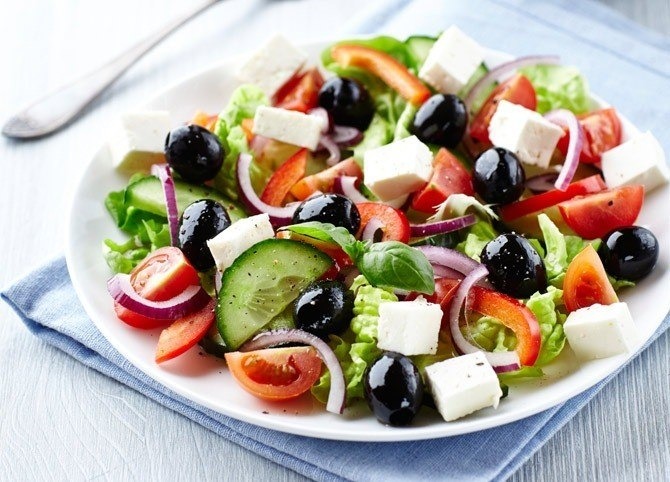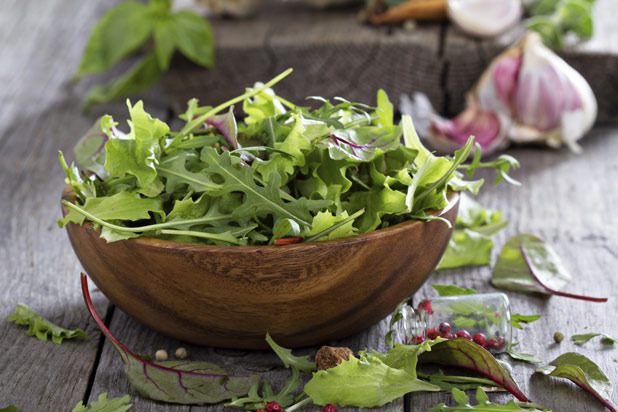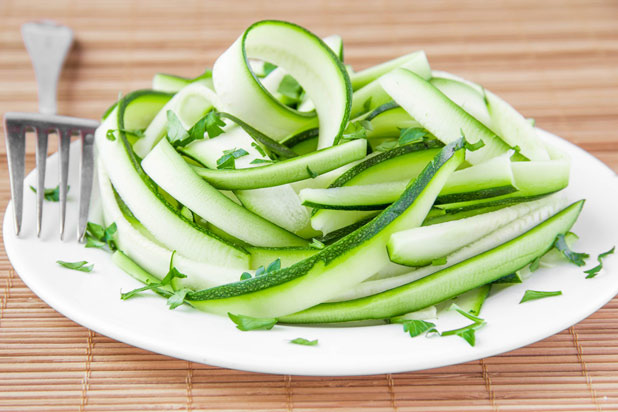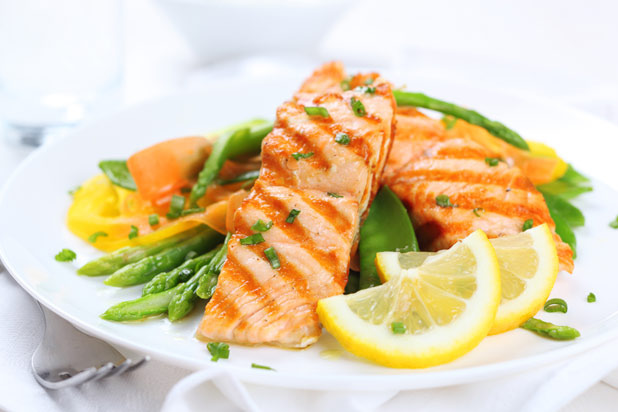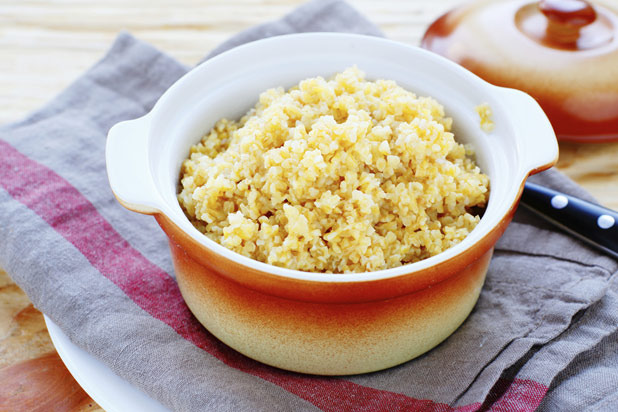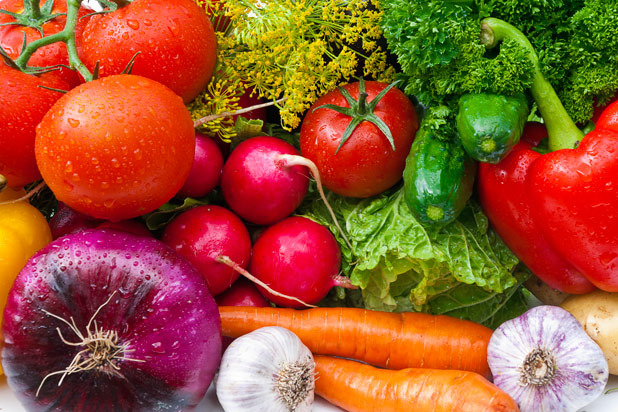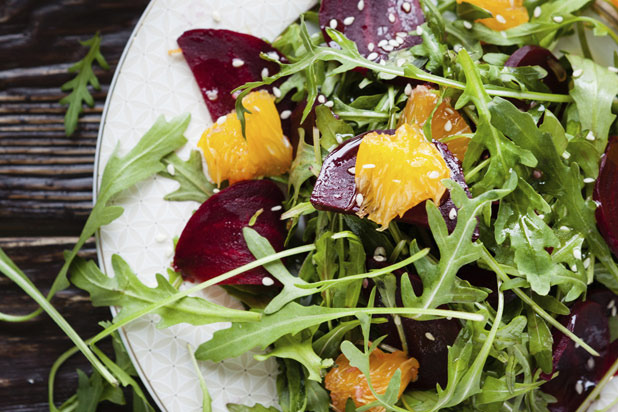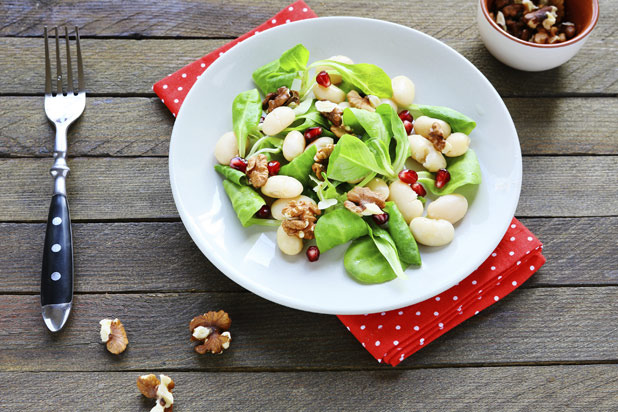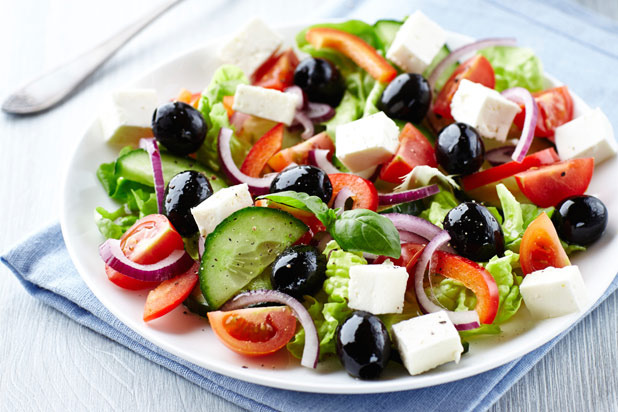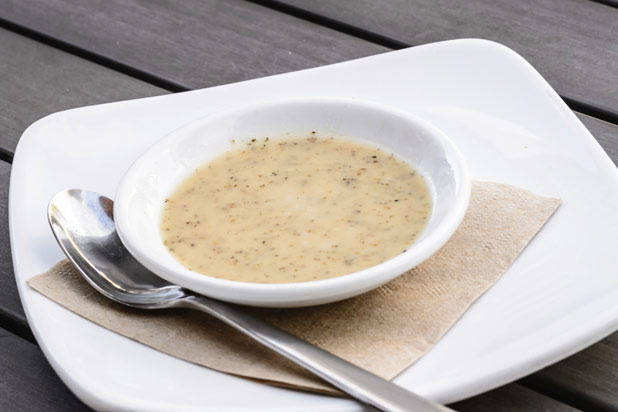How To Build The Perfect Healthy Salad (Slideshow)
Start with Greens
Creating a salad that you'll like starts with choosing greens that you like. Dark greens are more nutrient dense than their lighter-colored counterparts (like iceberg or romaine). If you're new to dark greens, try mixing them with more familiar lettuces to ease yourself into new greens
…Or Don’t
If you're really not a fan of leafy greens there are plenty of other vegetables that can serve as the base of your salad. Try cutting ribbons of zucchini or carrot with a vegetable peeler to make the base of your salad, or cut cubes of roasted beet or sweet potato.
Add Protein
Protein takes longer to digest that some other types of foods so it helps you feel fuller longer. Eating healthy lean proteins like white-meat chicken, turkey, fish, and egg whites can help your salad feel more satisfying.
Add Whole Grains
Many whole grains are rich in fiber. Fiber helps you feel fuller longer because it isn't digested by the body; basically, it takes up space in your stomach (until it is moved through your gastrointestinal tract) which helps prevent overeating.
Pile On the Vegetables
The majority of your salad should be vegetables. Try adding vegetables in a wide variety of colors and textures; that will add taste and ensure that you receive a wide variety of nutrients.
Add Some Fruit
Fruit is great on salad (it can add sweetness and help balance out the overall flavor) but be careful about which types of fruit you choose and in what quantity; the calories can add up quickly. In general, choose fresh fruits (dried fruits have more sugar) and aim for a moderate serving size — about ½ cup.
Add Some Crunch
Nobody wants to eat a salad without crunch! Skip the high-calorie croutons and add toasted nuts, super-crisp vegetables, or a few crunched-up whole-grain chips instead.
Know Your Cheese
Cheese is a notorious diet buster, even on top of an otherwise-healthy salad. If you want to use cheese in moderation, try shredded part-skim mozzarella; it's relatively low in calories and you can easily measure the desired amount.
Make Your Own Dressing
Making your own dressing is an easy way to control the fat and calories in your salad. Some salads are flavorful enough that all they need is a squeeze of citrus juice, others can be topped with a homemade heart-healthy olive oil vinaigrette. Click here for easy salad dressing recipes.
